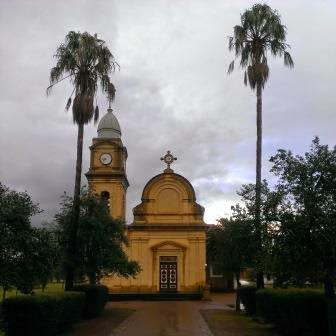A quick look at the pump house and water tank, as the museum was yet to open (a pity we couldn’t hang around), we continued our journey west.
Through
Meckering, Northam and Tooyday, all tidy and scenic towns with their fair share
of historical buildings, we arrived in New Norcia in time for the 1.30pm town
tour. An informative and cheerful guide led us through the various monastic
buildings, taking us to afternoon prayers, explaining the magnificent art work
in each place of worship and providing a comprehensive history of the town. Founded
by Spanish Benedictine monk, Dom Rosendo Salvado in 1847, New Norcia has
significant heritage value. There are only nine monks in residence now, but the
order remains autonomous from the Catholic Church and is self-providing. They
grow their own wheat to make their own bread and produce olive oil and wine,
amongst other things, with tourism and school camp bookings as its main source
of income. What happens to the town when there are only two monks left is
anyone’s guess as there isn’t a rush for men to join the brotherhood. After a
rainy night in the town campground, I arose early to attend the daily mass just
for the experience. It was an opportunity to view the fine plaster etchings
more than anything, so I slipped out before the end as it was past breakfast
time.
I was all
monked out, so it was time to head for the Indian Ocean. We left the last of
the eucalypts behind us as we crossed the Brand Highway, and were surrounded by
banksias and wattle for our drive to Nambung National Park to see The Pinnacles.
The walking trail is the best way to see the thousands of limestone spires that
rise out of the rich yellow sand; it’s a photographer’s delight, especially
when the sun shines through.
A 140km
drive north brought us to our free campsite, right beside the water with a box
seat for the setting sun.








No comments:
Post a Comment